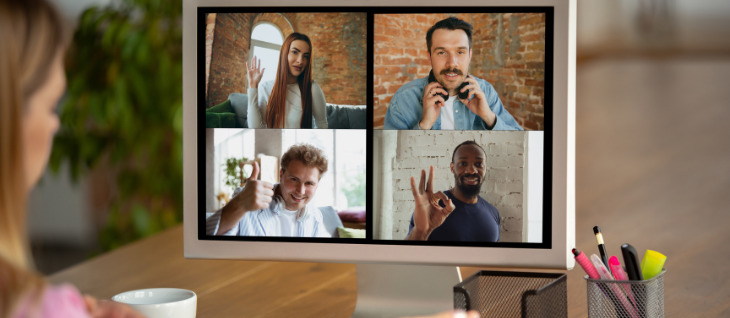Worker wellbeing became a workplace priority recently as leaders scrambled to preserve their businesses. But as a new normality settles in, are we in real danger of letting it slip?
The Health and wellbeing at work report 2022, published by the CIPD, says HR professionals feel wellness is dropping back down the agenda for senior executives – and say the focus on good mental health is also declining.
Some say leaders are once again prioritising productivity at the cost of keeping their workers in good shape.
But workplace champion Luis De Souza has a warning for managers:
there can be no productivity growth without a happy, well and engaged workforce – and a lack of focus on this will cost your company dearly.
In a video interview, Luis – CEO of NFS Technology – says the hybrid workplace offers huge opportunities for both employees and their organizations. But there are conditions…
“Successful hybrid working is all about mindset,” he says. “It’s about creating a culture where trust and shared responsibility between workers and an enlightened management team are established and actively developed.
“And it’s also about enabling the workplace to function in an evolved model where technology ecosystems support a dynamic environment.”

Help – where’s my desk gone?
Many organizations have shifted to allow at least some home working, and they are re-arranging their office space accordingly.
Deloitte, for instance, recently announced that it has cut its London office space by a third, abandoning 250,000 sq ft. UK managing partner Stephen Griggs told The Times: “We are constantly reviewing our office space to reflect changes to our ways of working.”
Other companies are also reducing the number of desks they host. Luis says: “One worker recently told me: ‘We went down to 18 desks from 24 initially, but now we’re down to 12. It can be a worry when you are coming into the office’.
“That’s the kind of concern that can add to the stress of a working day for an agile worker – and it’s exactly the kind of thing a good manager wants to avoid. Stress damages health and productivity, and can ultimately lead to the attrition of talent, which is costly and damaging.”
Your 2 steps to the optimal working environment
The equation is easy, says Luis.
Employees satisfied = better productivity.
“You need to take 2 steps to ensure you have the optimal environment where your staff can work, collaborate and innovate,” he says.
1. Your staff need to understand how to find and book the desk or collaborative space they need – for the day, the part-day, or the hour – before they come to the office.
This must be a simple and convenient process using a mobile app with a graphical floorplan that also helps them locate colleagues they need to work with at that time.
2. Once they arrive in the office, provide a complete digital experience that makes their visit productive, satisfying and seamless.
Your technology ecosystem provides this with elements including QR codes for contact-free access, digital signage for easy wayfinding, and integration with collaboration tools such as video conferencing.
Discover more about planning your best hybrid workplace.
Developing your supportive ecosystem
Workspace management software is now very affordable, and forms the heart of the hybrid workplace ecosystem. As well as making your employees’ working day go well, it integrates with sensors to provide real-time accurate data on how valuable space is being used and how it might be more effectively re-imagined.
“Every organization is different, and you should work with technology suppliers who take a consultative approach to define exactly what type of software you require to fulfil the varying demands of your workforce.
“For instance, some roles do require people in the office five days a week. For others, a project might involve some quiet time at home to put a proposal together and some collaborative time in the office to discuss it. But perhaps geography or personal needs make it necessary for some people to join the collaboration session by video.
“Your ecosystem should enable all of these ways of working, satisfying your employees and making their working day effective and enjoyable.”
The rethinking goes on
Luis believes the evolution of the workplace will continue to go on for at least the next couple of years. Conflicting news stories support this – a government minister recently called for UK civil servants to be compelled back to their offices, while more than 3,000 workers are taking part in a trial of the four-day week.
But that’s no excuse for letting things slide, he says.
“We cannot start to sacrifice wellness in our workplaces just because things seem to be a little more normal,” he says.
“Workers have strong demands now, and a firm opinion about the way they work best. In return, workplace leaders have learned a more holistic approach to management, as Gartner points out*, and must continue to forge forward if they want to retain their best people and push up productivity.
“We’ve all gone through a massive learning curve together. It’s now time to adapt, and use technology to create an optimal working environment – a workplace that is an easy, enjoyable and effective place to be.”
* See Luis being interviewed by Jason Sim of Enovec on the future of hybrid working:

